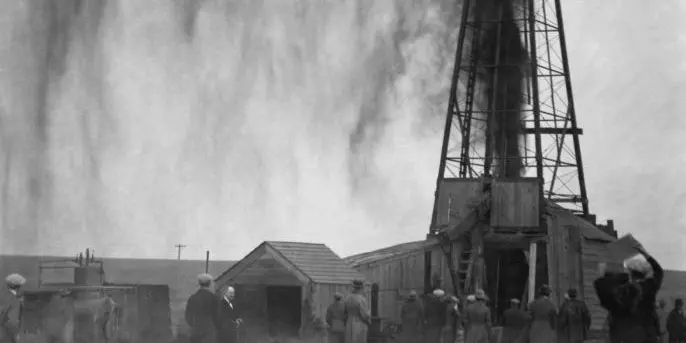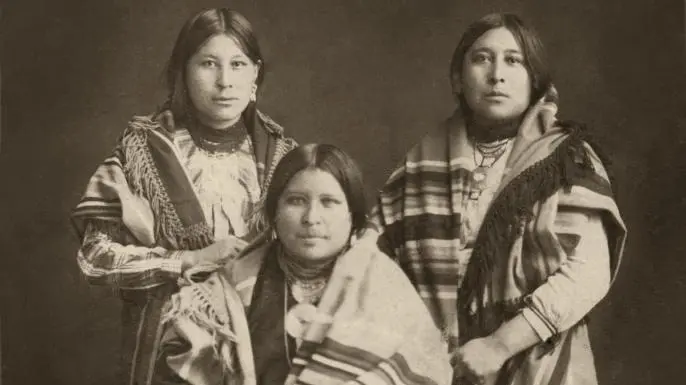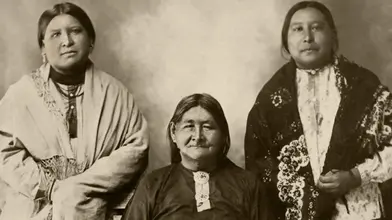In the 1920s, Osage Indians, beneficiaries of vast oil riches, were targeted through deadly schemes involving marriage and guardianship. As their wealth grew, so did the greed of those who sought to control it by any means necessary. This dark chapter in history became known as the Osage Reign of Terror.
Osage Oil Wealth Sparks Deadly Greed
By the 1920s, the Osage tribe, located in northern Oklahoma, had become incredibly wealthy due to oil discovered on their land. With oil royalties flowing in, the Osage people became the richest individuals in the world, per capita. In 1923 alone, Osage oil leases earned the tribe over $30 million—equivalent to more than $400 million today. This sudden prosperity, however, attracted a wave of white settlers, many of whom sought to profit from the Osage’s wealth through manipulation, exploitation, and murder.
The Marriage and Guardianship Strategy
One of the primary methods white settlers used to access Osage wealth was through marriage. Since Osage “headrights”—the shares of oil royalties—could not be sold or transferred, they could only be inherited. This meant that marrying into an Osage family became a direct path to wealth. Interracial marriages, which were previously rare, surged in northern Oklahoma as white men sought to marry Osage women and secure their headrights.

At the same time, the U.S. government passed a law requiring Osage people to prove their financial competence or be assigned a guardian to manage their wealth. This created an opportunity for lawyers and businessmen to exploit the system, with many Osage individuals, especially women, being declared “incompetent” and placed under the control of white guardians. These guardians often siphoned off vast amounts of money from their wards, sometimes leaving them in dire poverty despite their oil wealth.
The Epidemic of Murder
As Osage wealth grew, so did the body count. Between 1907 and 1923, Osage people died at more than one-and-a-half times the national average, with many deaths involving suspicious circumstances. Victims were often poisoned, shot, or blown up, but local authorities frequently failed to investigate, attributing the deaths to accidents or suicides. Corruption and collusion between local officials and those profiting from the murders ensured that most cases were never properly investigated.
One of the most notorious cases involved Mollie Burkhart, a wealthy Osage woman whose family was systematically murdered over a five-year period. Mollie’s mother, three sisters, brother-in-law, and cousin all died under suspicious circumstances, with causes ranging from poisonings to bombings. Mollie herself narrowly escaped death when her sister’s house was blown up.
The horrifying truth was that Mollie’s husband, Ernest Burkhart, had conspired with his uncle, William Hale, to kill her family and inherit their headrights. Hale, a prominent local figure, was the mastermind behind a vast murder-for-money plot that involved bribing officials, hiring hitmen, and manipulating the legal system to cover up the crimes. It wasn’t until the Bureau of Investigation (now the FBI) launched a probe that Hale and his accomplices were brought to justice.

Guardianship Abuse: Another Form of Theft
In addition to murders, many Osage people were also victims of financial exploitation through the guardianship system. Legal guardians, appointed by the courts, had full control over the finances of Osage individuals deemed “incompetent.” While some guardians acted in good faith, many used their positions to rob their wards.
A 1924 report from the Indian Rights Association revealed that these guardians were “shamelessly and openly robbing” Osage people. Restricted Osage members would often receive only a fraction of their oil payments, while their guardians pocketed the rest. Stories of guardians withholding basic necessities, charging excessive fees, and taking kickbacks from vendors were common.
Some cases went beyond financial exploitation and into more sinister territory. Research conducted by author David Grann uncovered shocking details about the number of Osage wards who died while under the care of their white guardians. In one case, a single guardian had eight of his 11 wards die, while another had seven of his Osage wards pass away. These staggering numbers suggest that many of these deaths were not accidents but part of a larger pattern of exploitation and murder.
The Generational Impact of the Osage Reign of Terror
The trauma of the Osage Reign of Terror did not end with the convictions of William Hale and his accomplices. For many Osage families, the pain of losing loved ones to greed and violence persisted for generations. Descendants of the victims grew up hearing conflicting stories about the deaths of their ancestors, with some families harboring both victims and perpetrators of the murders.

For example, journalist Dennis McAuliffe discovered that his grandmother, Sybil Bolton, had been murdered by her stepfather, a man appointed as her financial guardian. Official records had long maintained that her death was a suicide, but McAuliffe’s investigation revealed that she had likely been shot by the man who stood to gain the most from her death.
The lingering effects of these crimes have haunted the Osage Nation for decades. As more stories of corruption, collusion, and exploitation come to light, the full extent of the Reign of Terror continues to shock and horrify.
Conclusion: A Dark Legacy
The Osage Reign of Terror stands as one of the darkest chapters in American history, where greed fueled a murderous conspiracy that claimed the lives of countless innocent people. The combination of marriage, guardianship, and murder allowed white settlers to steal untold amounts of wealth from the Osage Nation, leaving a legacy of trauma and loss that still reverberates today. Although some justice was served with the conviction of key figures like William Hale, the true scope of the crimes committed during this period may never be fully known.